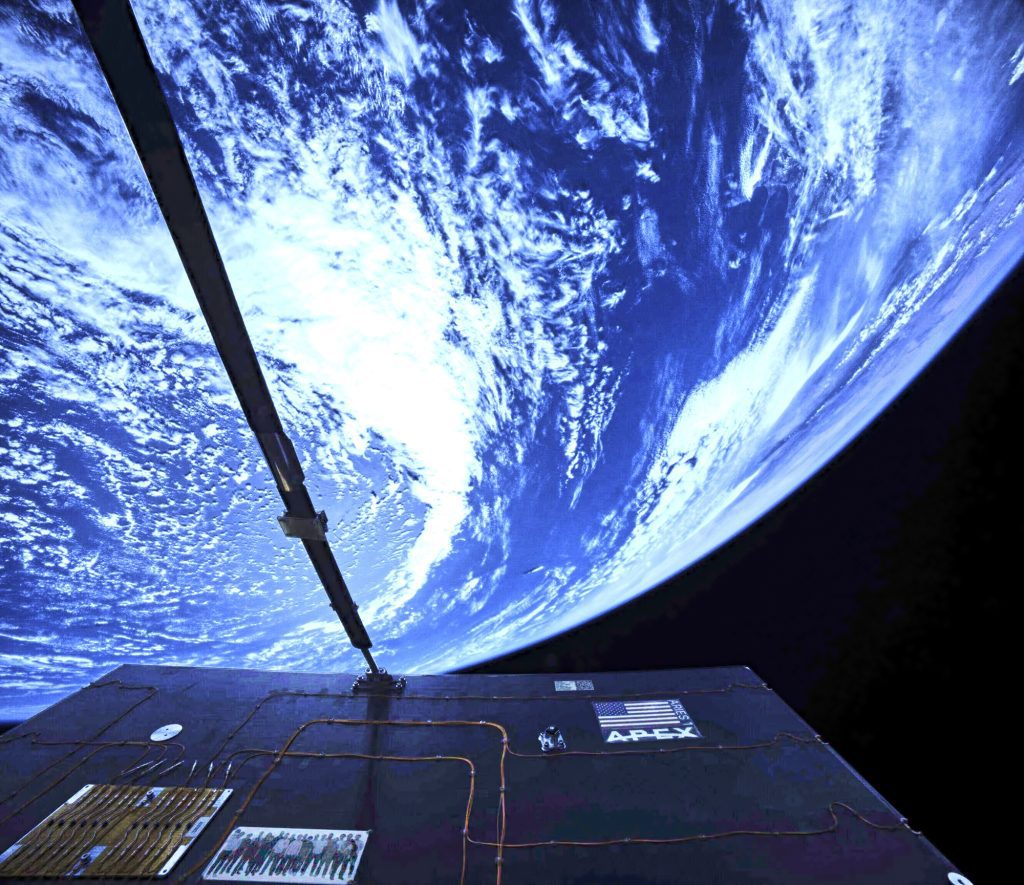WASHINGTON — Several companies, which sent their initial spacecraft on a joint mission earlier this month, have reported different levels of success, from complete operations to an early end of testing.
Apex, a company that makes satellites and launched its first Aries spacecraft on SpaceX’s Transporter-10 mission on March 4, announced on March 25 that the satellite has successfully activated its first payload, a camera that took a “selfie” of the spacecraft with the Earth in the background.
The company stated that being able to take and send the image demonstrated the overall performance of the spacecraft, from power to communications. They had previously announced that they were able to make contact with the spacecraft shortly after it was deployed. and confirmed that key systems are functioning properly.
“This selfie shows that all our satellite’s subsystems are operating well, both individually and together,” said Ian Cinnamon, chief executive of Apex, in a statement. “Space is challenging, and I am continually impressed by our excellent team for achieving this in a record time frame.”
The Aries satellite is on a mission called “Call to Adventure” and is carrying payloads for various unnamed customers.
Max Benassi, chief technology officer of Apex, said in the statement, “Activating our first payload was a significant achievement for our team, proving that we have successfully completed a full mission scope. We are eager to complete bus-level activation before assisting our customers in achieving their payload goals.”
Apex stated that it anticipated handing over access to those payloads to its customers in the “coming days,” following the final activation of the spacecraft’s guidance, navigation, and control system.
Apex is one of several companies that sent their first satellites on Transporter-10. Others have reported varying success in activating their spacecraft after launch.
Sidus Space, which launched its first LizzieSat spacecraft on Transporter-10, announced on March 20 that it had established two-way communication with the satellite. This occurred six days after the company received the first signals from the spacecraft, although it did not specify if this timeline was as planned or took longer than expected.
The 125-kilogram spacecraft carries remote sensing and edge computing payloads. Sidus Space plans to launch two more LizzieSats by the end of the year to support a “data as a service” business line.
Atomos Space sent two spacecraft, named Quark-LTE and Gluon, on Transporter-10. The company launched the spacecraft to demonstrate technologies for its Quark orbital transfer vehicle, with Quark-LTE docking autonomously with and being refueled by Gluon.
Atomos reported on March 5 that it had received telemetry from both spacecraft, indicating that they were in good condition, but discovered that the spacecraft were transmitting at a much lower rate than planned. The company has been working since then to improve communications and to stabilize the spacecraft. In the company’s most recent update on March 20, it stated that it was preparing to activate the spacecraft’s propulsion system, which will be used to demonstrate proximity operations.
True Anomaly also sent its first two Jackal spacecraft on Transporter-10 to check rendezvous and proximity operations. In a March 21 update, the company mentioned it took time to distinguish its spacecraft from others on the mission, statementthe company stated, a difficulty also encountered by the Defense Department as it monitors deployments from rideshare missions that can, in some cases, include more than 100 satellites. “After being released from the Falcon 9 rocket, we collaborated with other Transporter-10 riders to exchange location information and confirm the orbit state of both Jackals. It was inspiring to witness the space community unite to assist us and other organizations in organizing and correlating tracks for the closely spaced group of vehicles,” the company remarked.
The spacecraft, however, did not seem to be operational. “Though initial telemetry from Jackal 1 indicated the vehicle was in a normal state, we’ve been unable to confirm if either Jackal is currently functional,” the company stated, but did not provide further details on the issue. The company initially posted, but then removed, information about the problems on social media.
“Our first flight test has progressed as far as possible and we do not expect to achieve the remainder of the test objectives, including on-orbit rendezvous & proximity operation (RPO) demonstrations,” True Anomaly mentioned. The company said it is working on a second mission it plans to launch in the next year with hardware and software improvements.
Several companies that launched their first spacecraft on a rideshare mission earlier this month are reporting varying degrees of success, from full operations to an early end of testing.









